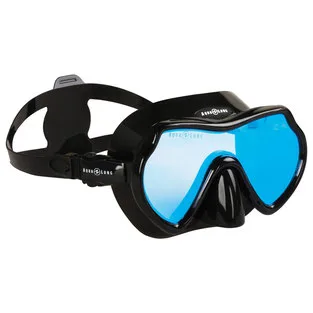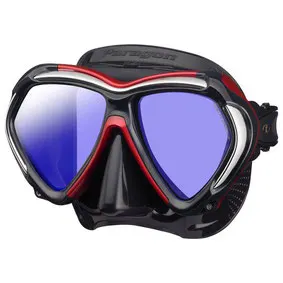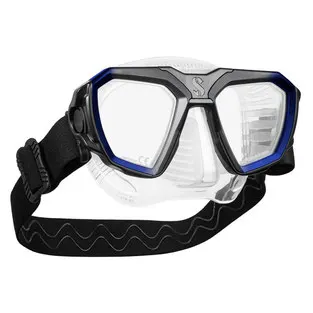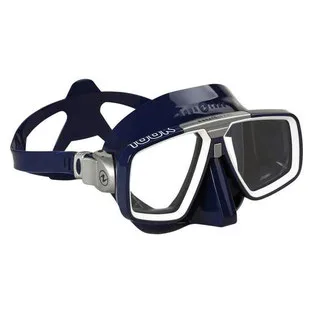There’s a lot to consider when buying a new scuba dive mask, the volume, fit, manufacturer and look of it, and then when you add ‘treated lenses’ into the mix it can become quite a minefield. So let’s break down exactly what treated lens masks are, whether they are right for you, and – together with Mikes Dive Store – we look at which ones you should look at buying after trying them out ourselves.
What are treated lens scuba masks?
The primary goals of treated lenses are to either protect your eyes from surface glare or enhance colours underwater. As divers we learn that water absorbs light as we go deeper, these anti-reflective coatings further improve light transmittance into the mask, thus increasing brightness. This is great for divers who spend a lot of time on the surface or divers who like to appreciate enhanced colours underwater – photographers will also appreciate the glare reduction underwater. The tint of the treatment in some masks make it hard for you to see the divers eyes – so for instructors, tinted masks aren’t usually their go-to, as their students won’t be able to see their eyes.
What are the best tinted scuba masks to buy?
We asked ourselves the same question! So, we popped over to Mikes Dive Store before we headed off to the Red Sea and picked up 4 of the most popular treated masks to give them a try. Here’s how we rate them:

A low volume mask with a fantastic field of vision, and ultra-crisp HD mirrored single lens – this was definitely our favourite! It didn’t need any treatment out the box, so was dive ready from day 1 (just added a splash of Stream2Sea mask defog). The tint made the underwater world look HD. Bright colours popping from everywhere – so much so, it was like experiencing diving for the first time again! The reflective coat also looks totally badass! Only weird downside was it almost reflected back on yourself so sometimes you could see a reflection of your own eye when diving. Not recommended to use on night dives – we found out the hard way. The tint is just too dark and doesn’t allow enough light in at night.

Up there as a favorite is the Tusa Paragon. Made of CrystalView optical glass for increased light transmittance, colour vibrancy and clarity, nor just an anti-reflective coating but also a UV420 protective coating that filters the commonly know UV-A and UV-B radiation as well as High Energy Visible (HEV) light which is just as damaging as UV-A. We found this to be a little less relective than the Mistiqque, allowing others to see your eyes, and also allowing in more light. Downside was it wasn’t immediately ‘ready-to-dive’ and needed a fair few coats of mask defog before it stoped steaming up. It is a smaller frame than the Mistique, so good for smaller faces. Prescription lenses can also be added to this product. Again, not good for night diving.

This Scubapro mask is fitted with UV+420 cut lenses that filter out high-energy visible (HEV) light as well as UV light without affecting how colours appear underwater. It is also the only premium mask that features an interchangeable lens system for optional minus, plus and bi-focal optical lenses. It comes with a choice of black or clear skirts in two sizes: Medium or Small as well as a special wide fit in the black skirt. We got the small size and it felt very small, and it felt like the range of view was limited because of the small frame. The comfort strap is great and makes it easy to get on and off, but overall the lenses didn’t feel much different from a normal mask.

It’s a no from us, we’re afraid. Foggy from the first jump, there was no de-fogging it throughout all the dives. The small frame made the depth of site limited and the changeable lenses weren’t very easy to change – especially on a dive boat having to fiddle around. It comes with three sets of lenses supplied with the mask, a Pure Clear set, a set of UV Cut lenses and a set of Blue HD Mirrored lenses. Each lens type is designed to suit different conditions, but it seemed it would have been easier just to have the Blue HD Mirrored lens as standard as that one made the most impact. Of course other divers may enjoy the flexibility of changing lenses, and smaller faces would enjoy the smaller volume.



